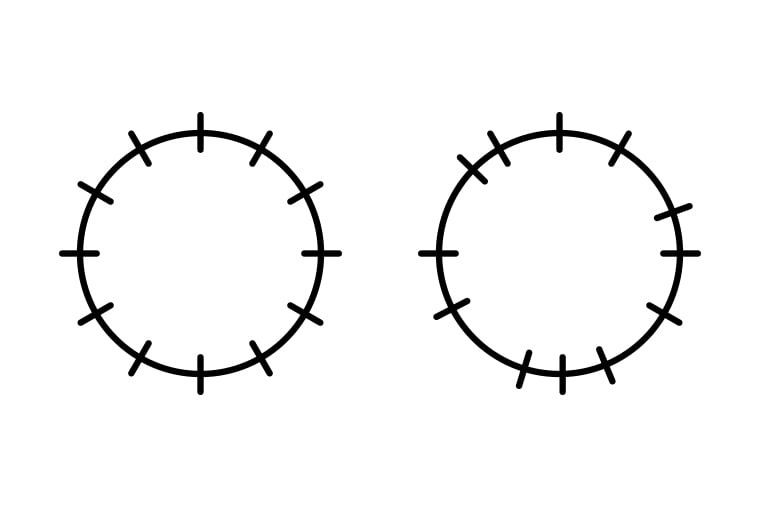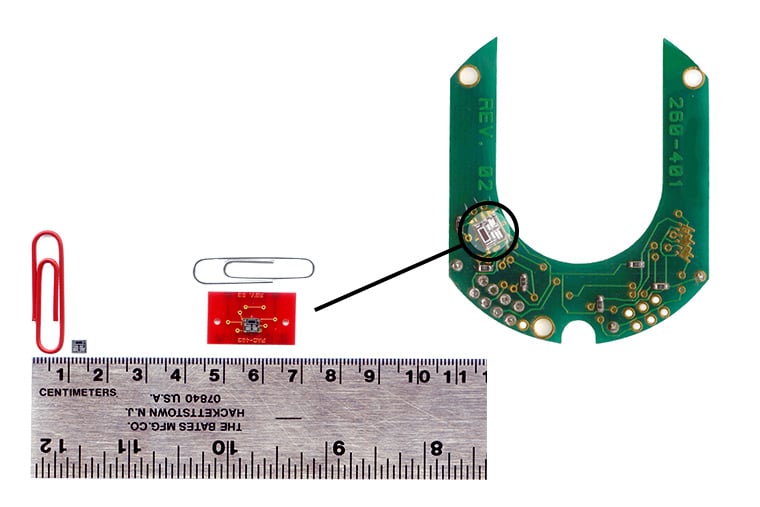Determining Accuracy
A number of factors determine the accuracy of an encoder. Accuracy of the disc master, quality of the bearings, stability of the rotating assembly, concentricity of the disc pattern to the true center, and design of the optics are among the most important factors.
The concentricity of the disc and its pattern relative to true center of the encoder shaft is one of the biggest contributing factors in determining overall accuracy. Additionally, mounting the encoder concentric relative to the motor or drive shaft affects accuracy, making the flex mount or coupling design and installation an important consideration.
Meaning of Accuracy Specification
Accuracy is typically defined as degrees or arc-minutes from a true mechanical position, or from one cycle to another cycle; hence, the lower the number the better. For example, an encoder may have an accuracy specification of 0.01° or 0.6 arc-minutes; less accurate encoders will have their accuracy stated as 0.04° or 2.5 arc-minutes.
Defining Resolution
Resolution is defined as the total number of increments produced during one encoder revolution. For incremental encoders, resolution is defined as Cycles Per Revolution (CPR).
High resolution, however, does not guarantee high accuracy. For instance, a low-resolution 256 CPR encoder can be very accurate, while a high-resolution 10,000 CPR encoder may be inaccurate if the manufacturer did not adhere to the necessary steps required to produce highly-accurate encoders.
As a rule, there is some improvement in accuracy from a very low resolution encoder (for example, an encoder with 50 CPR) to a higher resolution encoder, such as 1000 or 2000 CPR. This is usually due to the finer switching points associated with the higher CPR, and to the averaging effect, where more lines are in the active sensor area at one time.




